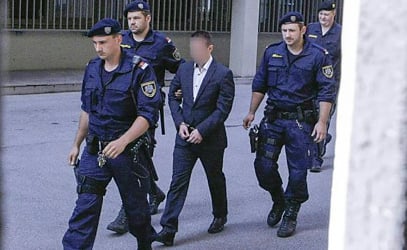CRIME
Larissa Bieber murderer gets 20 years
The trial for the murder last September of 21-year-old Larissa Bieber from Tirol began and ended on Friday at the Innsbruck Regional Court. The defendant pled guilty, and was sentenced to 20 years in prison.
Published: 13 June 2014 10:12 CEST
Updated: 13 June 2014 16:12 CEST
Updated: 13 June 2014 16:12 CEST

The man accused of murdering Larissa. Photo: APA/ROLAND MÜHLANGER
Bieber's 24-year-old boyfriend is accused of murdering her in his apartment out of anger because of her alleged infidelity. A speedy verdict was delivered in the afternoon, when the defendant pled guilty to the charges, and made a full confession.
Neither prosecutor nor defender made a statement. The verdict of the eight person jury was unanimous.
The comprehensive confession of the accused had worked in mitigation, explained Judge Norbert Hofer in the court's opinion. In addition, the personality disorder of the defendant was also influential in sentencing.
The prosecution has requested the admission of the defendant to an institution for abnormal offenders. A psychiatric expert has testified that the accused at the time of the murder was completely sane.
The accused has been diagnosed with a strong personality disorder with neurotic narcissistic features, which is why there is a high likelihood of further aggressive actions.
The 24-year-old is believed to have strangled the young woman during the night of September 14th, 2013. He then threw the corpse into the Inn river.
Larissa was initially thought to have disappeared. Her body was recovered after a large-scale search operation on October 6th.
Her boyfriend was arrested on October 26th on suspicion of murder.
Url copied to clipboard!


 Please whitelist us to continue reading.
Please whitelist us to continue reading.
Member comments